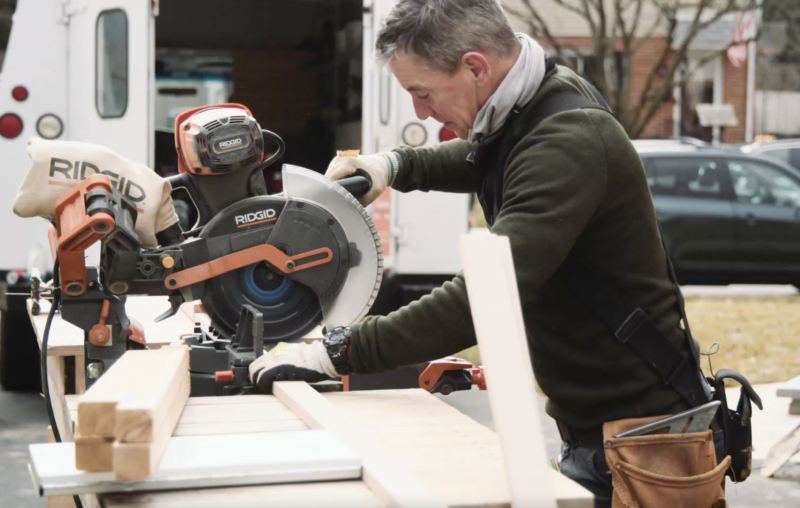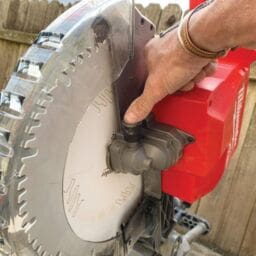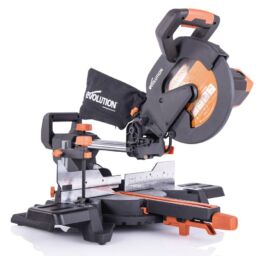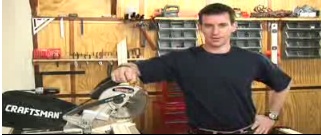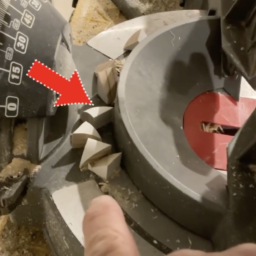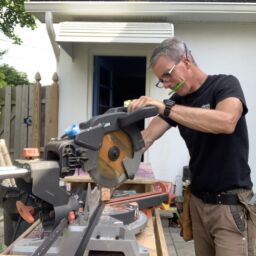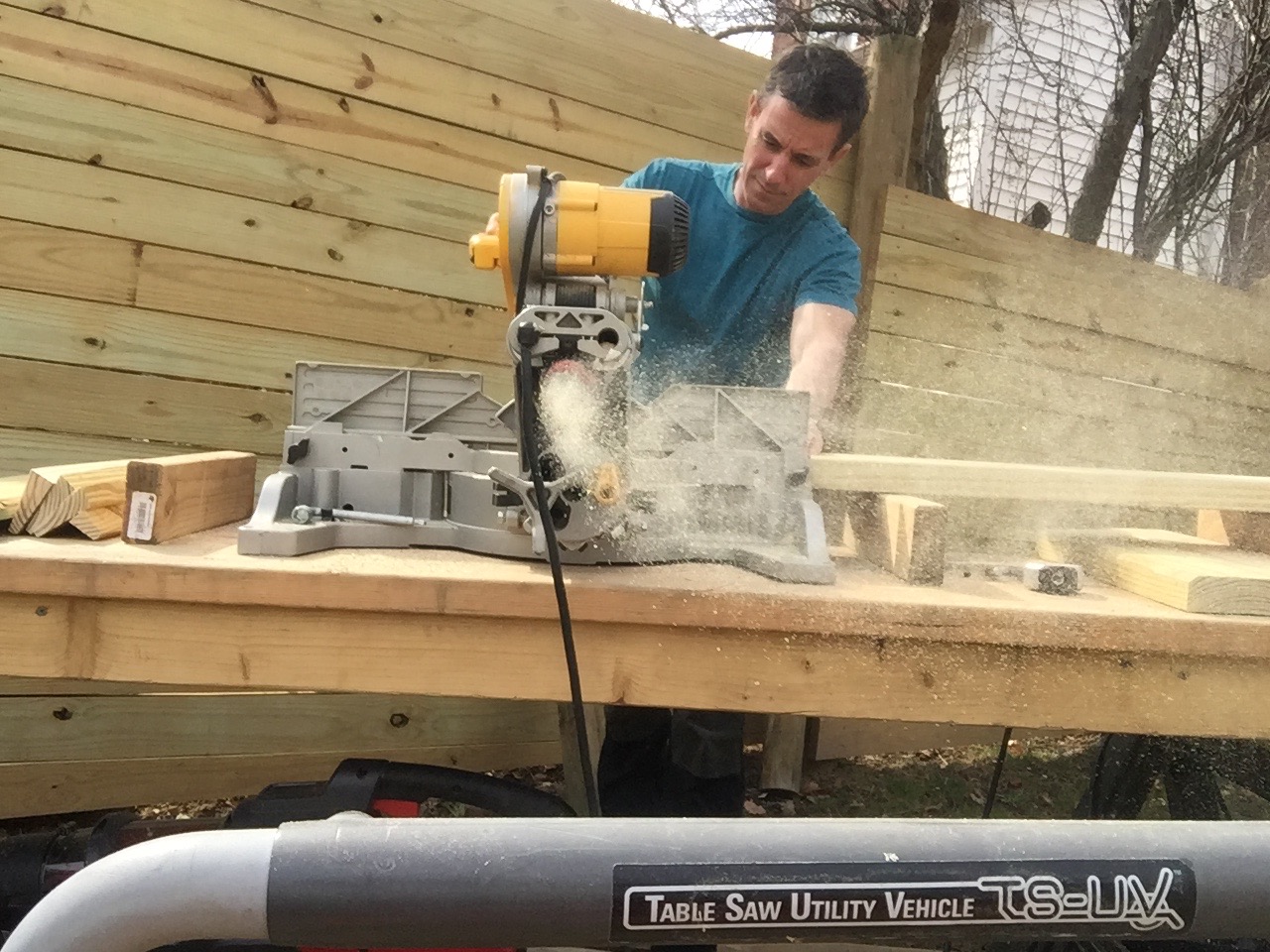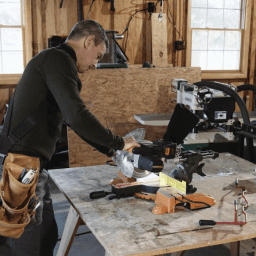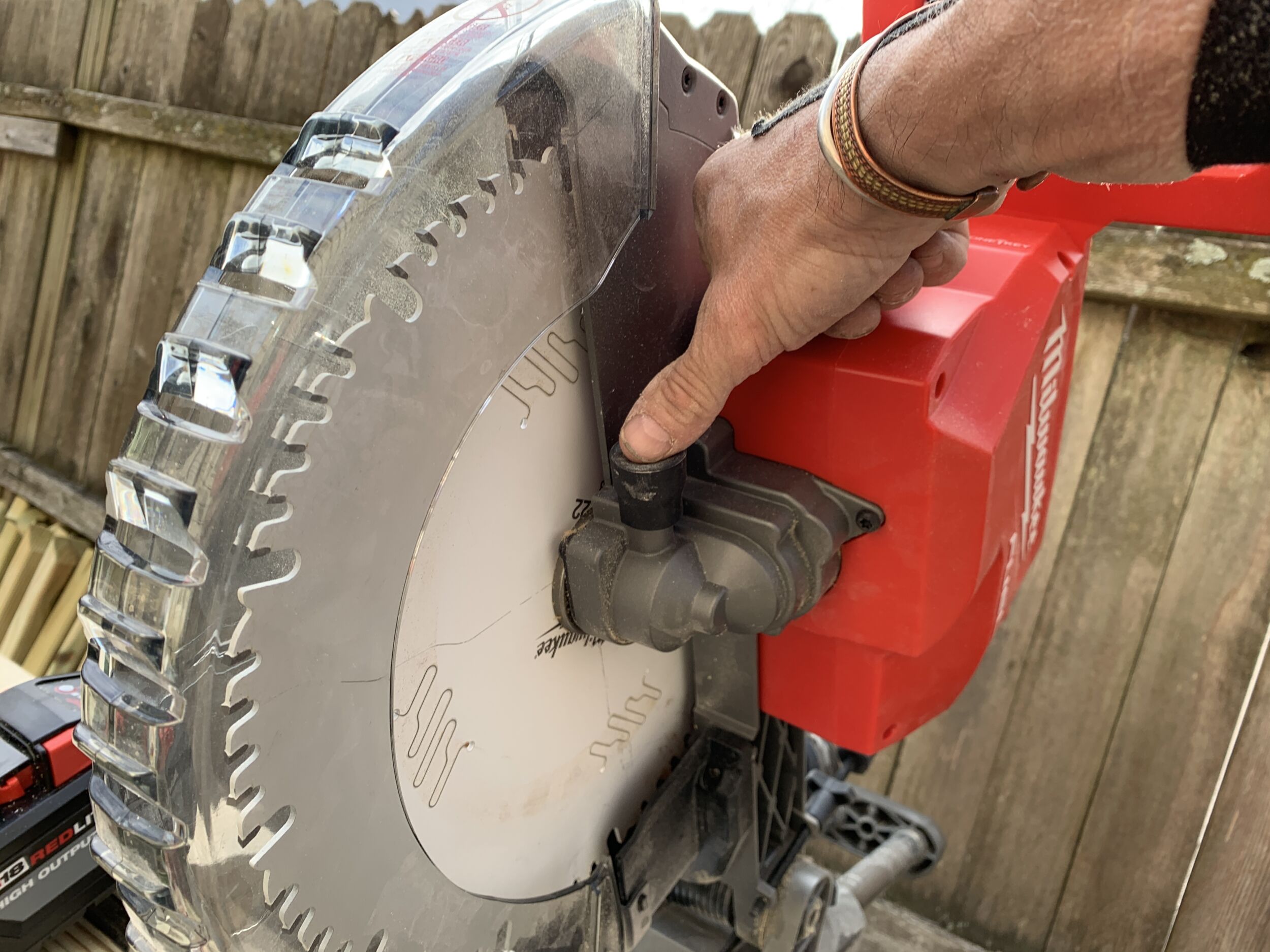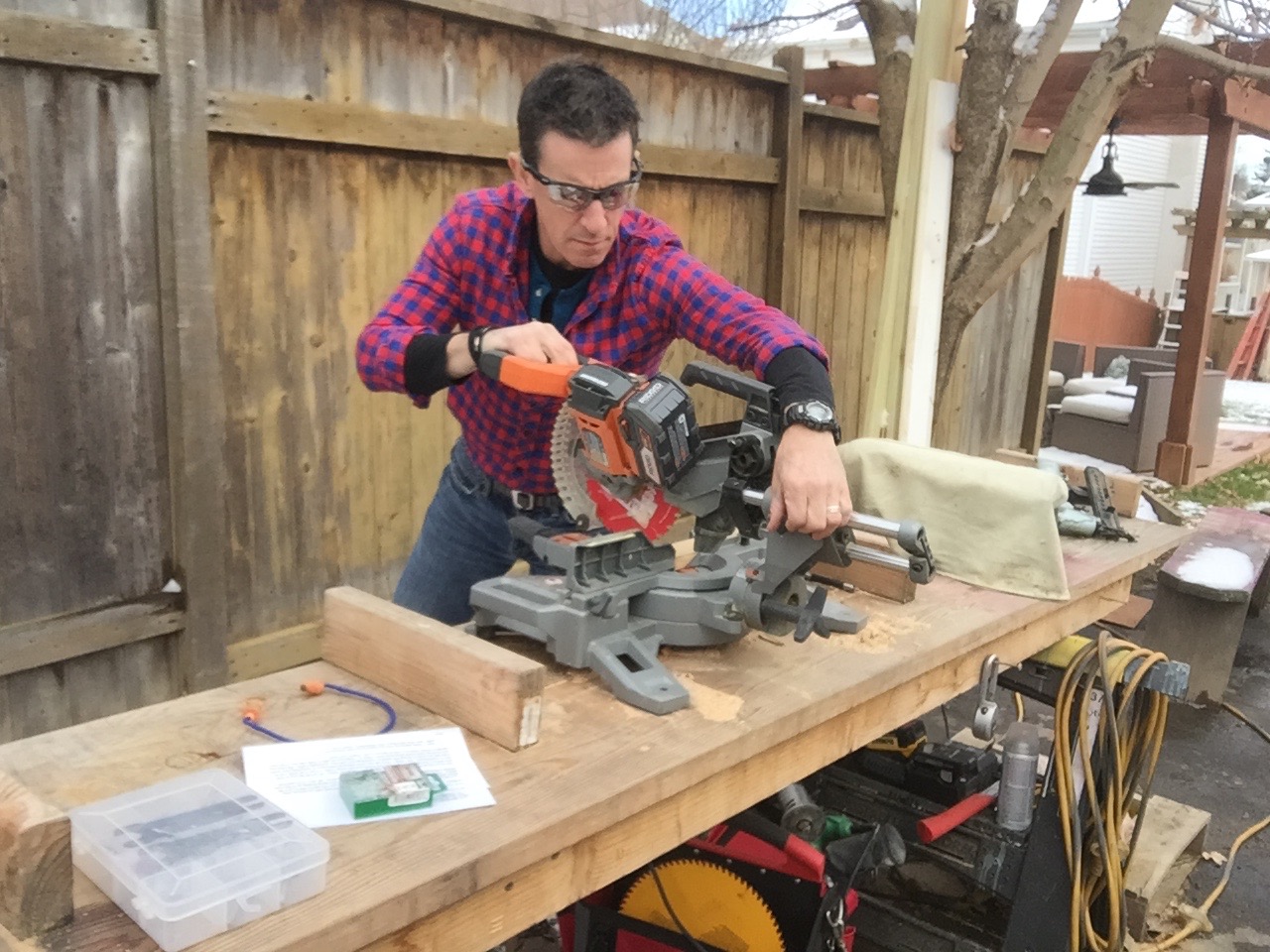
Here is Carpenter Mark’s Hands-On Review of the Ridgid 10-inch Dual Bevel Gliding Compound Miter Saw (model 4241).
Top Line Notes
- A 10-inch saw that does 99% of what a 12-inch saw does
- Sensational bevel adjustment
- Cuts 5 ¼-inch ogee base nested
- Excellent lines of site to the blade
- Belt drive
- No “head jump”
- Folding armature instead of rails; no rail projection
- Sets up in tight spots
- Excellent truck storage
- Light
- Great price, at less than $450 from The Home Depot
Real Deal Detail
To use a boxing term, this saw fights up. And is a knockout puncher.
Small and compact–what I call “cubular”–the Ridgid 10-inch gliding compound miter saw isn’t the first in this category of tool that swaps out rails that extend past the saw’s body for a collapsing/expanding armature (Bosch invented this in the early 2000s; patents expired, I’m sure), but it’s been fantastic on my jobsites.
Which is better: 10-inch or 12-inch?
It’s a 10-inch saw that does 99% of what a 12-inch saw does.
I have been on the 12-inch miter saw mainframe for, well, ever. They do more. But you know as well as I do, that you have to cinch up the weight belt because a 12 is a heavy lift. And the armature saws are heavier than the rail saws.
However, Ridgid hacked the Matrix with key details that makes this 10-incher work like a 12-incher.
The main element to upping the cut capacity is knocking out the blade housing so that more blade can get to more wood. That’s awesome. Running a house full of 5 ¼-inch ogee base, I could cut 90 percent or better standing up against the fence for inside and outside corners and copes on the Ridgid.
And, I could see my cut line through the louvered (that’s a DeWalt development, awesome) blade guard. I do wish the blade guard was a little less reflective of the totally awesome blade light (this one came from industry a long time ago; I don’t know which major tool manufacturer put one on a commercial saw).
Transportation and Storage
Moving tools is a thing, mainly through doorways, into and out of trucks. Same with storing them–both on site and in said same truck.
In both cases–being used or not being used–the compact profile of the Ridgid is a pleasure.
Because there are no rails–and because Ridgid snuck a 12-inch tool into a 10-inch platform–the saw is pretty easy to carry.
Also, because there are no rails, this thing opens up about 3 acres in my tool truck. It’s not a cube, but it stores like one.
Bevel Adjustment
With the possible exception of a discontinued DeWalt 12-inch tool some 10 or more years ago, Ridgid has the best bevel adjustment in the game. An up front lever releases the head while easy to engage–and accurate–detents on the bevel scale lock it in when you need to tip the saw to make a cut.
I don’t use it often, but when I do, I’m happy because I don’t want to have to bear hug a saw to turn a rear-mounted dial.
Other Features to Think About
It has a dual-action trigger. I’m not sure why, but sometimes it sticks. Whatever.
The miter swivel is a little stiff, but screwing it down to my miter saw station solves that.
The dust bag is pretty typical, but I use it so I wish it was a little better. It’s also a little crammed in the armature. Hardly a big deal.
Real Deal Rating
Let me put it this way: It’s going to take a monster to get this thing off my truck. I’ll review a great many other saws, but this Ridgid compound miter saw is going to be in front of me on my cut bench for a good long time.
About the author

